How to Plan a Trip to Rome
Rome, otherwise known as The Eternal City, is my favourite place in the world. No words can do this city justice, but I can only hope that, in one way or another, this will entice you to visit the city that, to this day, continues to give me literal goosebumps. Viva Roma! Here’s How to Plan a Trip to Rome, Italy.
It is far too easy to fall in love with Rome, as nothing is quite like it. Rome is a real mix of old and new. It flaunts its ancient history while evolving and expanding, as it has done for the past 3,000 years.
In combination with the atmosphere and rich history, ancient art, flowing fountains and archaeological treasures, Rome’s ivy-draped, cobblestone side streets provide an unforgettable experience. One that’s evidently inimitable anywhere else on our planet.
Rome is jam-packed with staggering sights like exploring an open-air museum.
8-Step Planning Checklist
Before you can take the full plunge, work your way through these eight simple steps. Whether you’re planning for the summer, spring, winter or autumn, planning a trip to Rome couldn’t be easier!
Follow this checklist to begin the adventure of a lifetime!
Step 1: Determine the Destination Country & Cities
Step 2: Decide on the Trip Duration
Step 3: Figure out When is the Best Time to Visit
Step 4: Create a Travel Budget
Step 5: Book Your Accommodation (preferably 3 to 4 months in advance)
Step 6: Research & Organise Transport & Activities
Step 7: Get Your Documents in Order (Visa, Passport & Travel Insurance)
Step 8: Nail the Process with this Packing List
Best Time to Visit Rome
If you want to know how to plan a trip to Rome, the best time to visit depends on a myriad of factors like the weather, crowds and festivities. Boasting a Mediterranean climate, this city experiences mild and wet winters with hot and dry summers.
As Italy’s capital city, this historical hub is steeped deep in all types of experiences, and there is no wrong time to visit. Expect a bustle of activity everywhere you go, as this city is never quiet. If you’re planning the ultimate getaway, here’s everything you need to know about the best time to visit Rome.
Summer (June to August): Honing in on scorching hot temperatures, longer daylight hours and lively summer vibes, this is undoubtedly the peak tourist season. Rome can get extremely crowded during the summer period, especially in popular tourist spots like the Colosseum and Vatican City. If you travel in summer, expect soaring temperatures, high prices and big crowds. It’s best to book attractions and accommodations in advance and get skip-the-line tickets if possible.
Autumn (September to November): With mild temperatures, colourful foliage and far fewer tourists than in the summer, autumn is one of the most beautiful times to visit Rome. This period provides pleasant weather to enjoy sightseeing and tick off the prominent landmarks. With slightly more affordable prices on accommodation and airfares, this is an ideal time for budget travellers and backpackers.
During October, the Rome Film Festival takes place. This event showcases both national and international films and attracts professionals and film enthusiasts from all over the world. If you’re a movie buff, this could be an ideal time to combine sightseeing and movie screenings.
Winter (December to February): Compared to other Northern European countries, Rome boasts mild to cool temperatures. With occasional rainfall, winter is the off-peak period in Rome (except for December). During this season, there are far fewer crowds and more affordable airfares. It’s common for some restaurants to reduce operating hours.
Italy really is a year-round destination, and the winter season boasts the chance to see Christmas markets and head up north for winter sports. My second visit to Rome was during the middle of December; the weather was refreshing and crisp with warm sunshine. The primary benefit of visiting during this period was that there were hardly any tourists compared to when I visited in September. Another plus: the prices are not skyrocketing!
Spring (March to May): Flaunting favourable weather, blooming flowers and longer days, spring is one of the best times to visit Rome. During this season, you can enjoy sightseeing, visit outdoor attractions and bask in the outdoor dining scene. Spring in Rome offers affordable accommodation and flight prices and fewer frolicking tourists than the summer. Score!
During the Easter period and Natale di Roma (Rome’s Birthday), you can expect big crowds of tourists and locals alike. The streets light up with parades, fireworks and festivities, making it an ideal time for culture vultures to visit.
Language
The official language is Italian. However, English is widely spoken, as well as a bit of French, Spanish, and German. I’d recommend learning a few Italian phrases to whip out when the time’s right. A little bit of effort can go a long way with the locals!
Best Things to Do in Rome
The Colosseum
Let’s start with one of the capital’s most remarkable monuments, The Colosseum. This will take you back to discover the ancient Roman empire that once held up to 80,000 spectators.
As the largest amphitheatre ever built, it once hosted gruesome performances and battles between gladiators and wild animals.
As you pass by the Colosseum on your way to Palatine Hill, check out the Arch of Constantine, which commemorates the triumph of Constantine I the Great in the battle of the Milvian Bridge.
Considered the birthplace of the Italian capital, Palatine Hill not only offers excellent views of the city but it showcases the ruins of impressive buildings once inhabited by citizens of high Roman society. It is thought that Palatine Hill was occupied by the Romans since 1000 B.C.
If you want to know how to plan a trip to Rome, the Colosseum should be at the top of your bucket list. From this point, you can also get some of the best views of the Roman Forum.
Roman Forum
The Roman Forum, formerly ancient Rome’s main square,
was once a political and social hub where religious and public life thrived. Some of the most notorious figures in history, such as Julius Caesar, once walked these paths!
Similar to the other main attractions of Rome, it is now home to many ruins. It’s best to visit the Roman Forum in the morning, as this is when most people go to Vatican City. Regarding the entrance, they offer a combined ticket to the Colosseum, the Roman Forum and the Palatine Hill for €12,00.
European Union Members:
Children (under 17) = free entrance.
Adults (aged 18 – 24) = €7,50.
Seniors (over 65) = free access.
The Pantheon
The Pantheon is a temple dedicated to ‘All of the Gods’. This well-preserved architectural masterpiece is a must-see! As the largest brick dome in the history of architecture, it features heavy bronze doors and marble floors. P.S. Entry is free!
The best time to visit the Pantheon is usually half an hour before closing. This is your best bet of enjoying the architecture and ambience without having to punch your way through the crowds.
Check out the street artists outside in the Piazza della Rotunda. I still have vivid memories of the combination of the blissful ambience, live music and phenomenal views.
The Vatican City
You might have noticed by now that this city is brimming with bucket-list-worthy experiences. If you want to know how to plan a trip to Rome, the Vatican City is a must-see.
Of course, no visit to Rome is complete without a trip to The Vatican City, the heart of the Roman Catholic Church and home to the Pope. The Vatican is packed with mind-blowing relics, museums, statues, fountains and unforgettable sights.
The best way to see the Vatican Museums & Sistine Chapel is first thing in the morning or at quieter times. Waiting in long lines can take away from the whole experience, so opt for ‘skip-the-line’ tickets and book well in advance. The Vatican Museum tickets are notoriously booked out days ahead, especially during the high season (June to August).
St Peter’s Basilica and Square
St Peter’s Basilica and Square, designed in the seventeenth century, is by far one of the most breathtaking piazzas in the world. The Basilica was designed by world-renowned artists such as Michelangelo, Bramante and Carlo Maderno. I would highly recommend visiting the Basilica. You simply cannot miss the intricate details, striking art and impressive design!
Nearby is the Castel Sant’Angelo, ‘The Castle of Angels’, perfectly showcasing Renaissance architecture.
Side note: Try to visit early in the morning, as crowds can get relatively intense.
The entrance to the basilica is free. However, you’ve also got two options to climb to the top of the Dome:
Lift to the terrace (+ 320 steps) = €8,00.
Climb all 551 steps by foot = €6,00.
The Vatican Museums, established by Pope Julius II, have become one of the largest in the entire world.
They contain over 70,000 masterpieces that the popes have collected throughout the centuries.
I still have vivid memories of walking through these museums, the content itself is beyond measure, and my words simply cannot do them justice. The Vatican will leave you speechless. Do yourself a favour and immerse yourself in this experience.
As the Vatican attracts over 6 million visitors annually, expect many people. That being said, visiting during the week around 1 pm is advisable. During high season, avoid weekends. Keep in mind that the first Sunday of every month is free.
Entrance (Vatican Museums + the Sistine Chapel)
Adults €16,00 per person
Children (ages 6 – 18) = €8,00
Students (ages 19 – 26) = €8,00
The Sistine Chapel
The Sistine Chapel is one of the greatest treasures of the Vatican City. It features complicatedly detailed art on the walls and ceiling. Everywhere you look is jaw-dropping. Between 1508 and 1512, Michelangelo spent four years painting the mural of the tops in the Sistine Chapel, portraying the nine stories from Genesis. Two of the most significant works include The Creation of Adam and The Final Judgement.
The Sistine Chapel also highlights pieces from some of the world’s most celebrated artists, including Luca, Michelangelo, Botticelli and Perugino. If planning a short trip to Rome, consider buying ‘skip-the-line’ tickets. This way, you avoid wasting hours in long queues and, instead, get stuck straight into the good stuff!
Trevi Fountain
If you are wondering how to plan a trip to Rome, the Trevi Fountain is a movie-made magic spot that enchants you. But, as with most popular attractions in Rome, the flocks of tourists can take away from that feeling. To beat the crowds, arrive at Trevi Fountain no later than 7 am to 7:30 am. Alternatively, endure fewer tourists by heading here in the late evening.
Check out Rome’s largest fountain, the Trevi Fountain, which has origins dating back to 19 B.C. Throw a coin (or three) and make a wish into one of the most famous fountains in the world. People throw over €3000.00 in cash daily; the money is donated to charity organisations once collected.
Piazza Navona
Rome’s piazzas are the centre of daily life and are renowned for their bustling atmosphere and impressive fountains.
Piazza Navona is one of Rome’s most famous squares, filled with local street artists and surrounded by mansions and intricately designed fountains. It has gelaterias, restaurants, shops and the Museo di Roma. Nearby is the church Sant-Ivo alla Sapienza, which features Baroque Roman architecture.
If you’re hungry, head to the La Piccola Cuccina and enjoy the fresh air as you sit outside on their traditionally designed terrace, immersed with art and fresh flowers. You will feel as if you are a local here. Recommended: try a macchiato with a scone and jam.
The Spanish Steps
Ensure you have time to head to the Piazza di Spagna and the Spanish Steps. To avoid crowds, the best time to visit the Spanish Steps is in the early morning or late at night.
Built in the 1720s, with over 135 steps, there’s plenty of room to soak up some Mediterranean sunshine as you rest and recharge your batteries. Essentially, it’s a social hub amongst tourists and locals.
This area screams cheer during Christmas when the streets are jam-packed with vivid lights and filled with festive decorations. Be sure to go to the very top for all-round stunning views.
Must-See Art Galleries in Rome
Fancy a good piece of art? You are in for a real treat.
Rome is filled with tonnes of museums and art galleries.
Check out the Galleria Colonna, which hosts a world-class art collection, one of the oldest and largest private palaces in Rome.
The Galleria Borghese is also one of Rome’s finest museums, built in the 16th century and conveniently located in the Borghese Gardens. It features a small lake and plenty of greenery. The garden villa is filled with Bernini sculptures and artwork from Caravaggio, amongst many other notorious figures. If you can make the time, be sure to head to:
Palazzo Altemps
Capitoline Hill and Museum
National Gallery of Modern Art
Palazzo Barberini
Galleria Doria Pamphilj
National Etruscan Museum
Churches and Basilicas
If you’re wondering how to plan a trip to Rome, you’ve probably noticed the massive haul of religious buildings. As the centre of the Holy See, Rome is home to four of the highest-ranking churches and basilicas in the world. These are definitely worth visiting if you’re interested in religion and history. The significant basilicas include:
St. Paul Outside the Walls
Basilica di Santa Maria Maggiore
Basilica St. John Lateran
Other must-see churches and basilicas include:
Basilica di San Clemente
Basilica di Santa Maria in Trastevere
Santa Maria del Popolo and the Santa Maria in Aracoeli
Markets You Can’t Miss in Rome
If you’re on the lookout for souvenirs, antiques, fresh local produce, books, unique jewellery or vintage clothes, Rome has a tradition of upholding daily and weekly markets and activities.
Check out the Testaccio Market, a luminous building encompassing Rome’s culinary traditions and offering other products such as handbags and clothing. It’s one of the best places to sample Rome’s diverse cuisine.
There’s also Borghetto Flaminio, a flea market north of Piazza del Popolo. Featuring designer clothes, handbags, furs, and some antiques.
A great market to score some pre-loved Gucci! And last but not least, Campo de Fiori, which used to be a field of flowers, is now a bustling market during the morning, selling local fruits, vegetables and fresh flowers. It transforms into a lively square at night with various hip cocktail bars and delicious restaurants.
Because Rome attracts millions of tourists every year, booking your tickets ahead of time is essential so that you don’t get stuck waiting in lines for hours.
Food, Glorious Food
Now, on to the important stuff. As fascinating as exploring history is, you’re well and truly going to be craving some decent food. Lucky for you, Italy is a foodie’s haven and is world-renowned for its cuisine.
You must get some fresh pasta, pane (bread), a bruschetta, pizza, gelato, limoncello and vino (wine).
I was screaming Viva Italia at the top of my lungs.
And I do not doubt that you will be too.
For more budget-friendly food, head to Trastevere or hit a market with fresh, local ingredients and take your best shot at cooking a meal at home.
As you are well aware, Italy, in general, is home to a hyperactive gelato industry. If you need a sugar fix, check out my guide to the Best Gelato in Rome.
More Sites to Discover in Italy’s Capital City
If you want to know how to plan a trip to Rome and you have time to spare, consider adding these spots to your itinerary:
Villa Borghese
Complesso del Vittoriano
Trajan’s Market
Baths of Caracalla
Circus Maximus
Castel Sant’Angelo
Altare della Patria
Domus Aurea
Janiculum Hill
The Catacombs (underground crypts with sculptures). There are three: the Catacombs of Praetextatus, the Catacombs of San Sebastiano & the Catacombs of San Callisto.
Best Activities in Rome
If you’re on the hunt for the top-rated attractions in Rome, you’re in the right place. Here is the best of what Italy’s capital has to offer:
Where to Stay in Rome
If you want to plan a trip to Rome, there’s a huge haul of accommodation alternatives to cater to various budgets and preferences. The best area to stay in Rome is determined by your interests, budget and proximity to the attractions you intend to see. Here are some of the most popular neighbourhoods and areas for accommodation in Rome. Get ready to rest your pasta baby!
Historic Centre (Centro Storico)
Rome’s historic centre is an obvious pick for many. If you want to plan a trip to Rome for the first time, this popular choice offers charm and convenience. You’ll be closely located to the major highlights like the Colosseum, Roman Forum, Pantheon and Piazza Navona. In the Centro Storico, you’ll encounter a broad spectrum of hotels, guesthouses and vacation rentals. The prices are usually higher due to the central location, so it may not be ideal if you’re a backpacker or budget traveller.
Testaccio
Although Testaccio is off the beaten track, it offers an authentic Roman experience. Woven with a quality coffee scene, wallet-friendly restaurants and lively nightlife, this is one of the best places to stay in Rome. Plus, it’s just two metro stops from the Colosseum! If you want to know how to plan a trip to Rome, you’ll find a wide variety of accommodation options in Testaccio.
Monti
Sandwiched between the Colosseum and the Roman Forum, Monti was formerly known as the Red Light District. Brimming with a bohemian vibe, this trendy neighbourhood in Rome features narrow streets, upscale boutiques and a dynamic nightlife. Monti melds a mix of accommodation options, including boutique hotels, apartments and guesthouses. If you’re planning a trip to Rome, this is one of the best areas to stay.
Pigneto
An art and creative hub along the eastern edge of the city. Rent an apartment to get the whole Pigneto experience. Check out Via del Pigneto: a street that hosts daily outdoor markets and, at night, comes to life. Check out the street art along Via Fanfulla da Lodi.
Trastevere
Filled with ivy-draped, narrow alleyways packed with authentic restaurants, late-night crowds and vibrant nightlife, Travestere oozes bohemian vibes. If you’re seeking a local experience without the hassle of having to travel far out of town, this is your best bet. Nearby, leave the flocks of tourists behind and climb the Gianicolo Hill for some seriously stunning, picturesque views. Strutt your stuff through the cobblestone streets, sit along the west bank of the Tiber River and dabble in the selection of restaurants, bars, and nightlife opportunities. The accommodation in Trastevere varies from pocket-friendly hostels to boutique hotels and top-end apartments.
Termini
This is the main area around the city’s central transportation hub, Termini Station. If you plan to explore via public transport, this is one of the most convenient places to stay in Rome. Termini is home to various cost-effective hotels, backpacker hostels and budget accommodations.
Spanish Steps (Piazza di Spagna)
The Spanish Steps is an upscale area notorious for its luxury shopping streets like Via dei Condotti. Home to the famous Spanish Steps, this neighbourhood offers high-end experiences at every end. If you want to plan a trip to Rome, this area is ideal for high-end hotels, opulent apartments and luxe accommodations.
Vatican City (Prati)
Situated on the cusp of the Vatican City, Prati is an area that offers convenient access to one of the world’s smallest city-states. This is ideal for those set on visiting St. Peter’s Basilica, the Vatican Museums and the Sistine Chapel. If you’re planning a trip to Rome, Prati presents a mix of accommodations: hotels, bed and breakfasts, and apartments.
Top Hotels in Rome, Italy:
€: Hotel Bright
€€: Sentho Roma
€€€: Hotel Vilón
How to Get Around Rome
Boasting many different ways to get around, Rome makes travelling easy. The Public Transport in Rome functions frequently and is relatively affordable, and you certainly don’t need to spend a lot to get around. Here’s everything you need to know about getting around Rome.
Metro
Rome is home to an extensive underground metro system that offers convenience and affordability.
There are three metro lines: Line A (red), Line B (blue) and Line C (green). The metro in Rome operates from 5:30 am until 11:30 pm, with extra hours on weekends and public holidays.
The metro stations are scattered across the city, with multiple locations near major attractions and transport hubs. If you’re a budget traveller who wants to know how to plan a trip to Rome, the metro is one of the best ways to get around.
Bus
Rome boasts an expansive bus network that spreads across the entire city. Catching the bus is an ideal way of reaching destinations not served by the metro system. The main bus terminal in Rome is situated at Termini Station, and you can buy tickets from tobacco shops, newsstands or vending machines before getting on the bus.
Tram
Italy’s capital is crowned with a web of trams that operates within the city centre. Taking the tram is ideal if you want to head out to the neighbourhoods and attractions that aren’t available by the metro or bus. Like buses, you can purchase tram tickets before boarding.
Taxi
Taxes are also widely available if you want to plan a trip to Rome. It’s easy to catch them from designated taxi stands or to call them on the street. Avoid any unwanted hassles by only using the official white taxis with an illuminated “TAXI” sign on the roof. Ensure that the taxi meter is turned on, and don’t be afraid to ask for a receipt at the end of the trip.
Bike Sharing
If you want to visit Rome, consider using the bike-sharing system called “Biciroma”. Dotted with bike stations throughout the city, you can rent a bike through a mobile app or at the bike station. If you want to get active on your Rome trip, cycling is a great way to explore the historic centre and surroundings. If you choose to rent a bicycle, opt to head out early in the morning. Electric scooters are also available throughout the city, with Lime or Bird being the most popular options.
Walking
These streets were made for walking! Undoubtedly, Rome’s historic city centre is best explored on foot. If the Romans did it, you can too. Many of the major attractions in Rome, like the Colosseum, Roman Forum, and Trevi Fountain, are within short walking distance of each other. Nevertheless, be prepared to battle your way through crowded streets, especially if you’re visiting in the high season.
Train
When you visit Rome, you can easily make your way to other major cities via the comprehensive train network. If you plan to explore destinations like Florence, Venice or Naples, you can board a train from one of Rome’s main stations, Termini or Tiburtina.
Car, Motorbike or Scooter Rental
Of course, you can rent a car, motorbike or scooter in Rome. This is an ideal option if you want to explore outside of the city centre, and it offers flexibility and the freedom to travel at your own pace. Rome has heavy traffic, especially during peak hours. Be aware of ZTL (Zona Traffico Limitato) zones, which are restricted traffic areas monitored by cameras.
Rome City Pass
If you’re wondering how to plan a trip to Rome for the first time, opt for the Rome City Pass. This budget-friendly alternative includes unlimited public transportation for a specific time, with discounted entry to popular tourist attractions. If you plan to do lots of sightseeing and use public transport, this is one of the most cost-effective options.
Rome Airport
Italy’s capital city is home to two main airports: Leonardo da Vinci-Fiumicino Airport (FCO) and Ciampino-G.B. Pastine International Airport (CIA). If you want to plan a trip to Rome, here’s everything you need to know about both airports:
Leonardo da Vinci-Fiumicino Airport (FCO)
Fiumicino Airport is located approximately 32 km southwest of Rome’s city centre. It is one of the busiest airports in Europe, with four terminals and a wide range of facilities like duty-free shops, trendy restaurants, currency exchange offices and ATMs.
From FCO Airport, a range of transportation options are available to reach the city centre. You can choose to take the train, bus, taxi or even a private transfer service. The most popular mode is the Leonardo Express train, as it is directly connected to Rome Termini station.
Ciampino-G.B. Pastine International Airport (CIA)
Ciampino Airport is located about 15 km southeast of Rome's city centre and is popular among low-cost airlines. With just one terminal building, it is relatively smaller than Fiumicino Airport. You’ll still find basic amenities like shops, small cafes, currency exchange offices and car rental services.
From Ciampino Airport, you can reach Rome’s city centre via a shuttle bus service, taxi or private transfers.
Rome Travel Tips
As the city is not overly large, it is possible to see a lot of Rome on foot. I’d highly recommend this experience as you can absorb a more authentic, realistic version of what Rome is like for locals.
You can enjoy the fresh air without the frustration of traffic congestion or overcrowded buses! We spent two days strolling through the cobblestone streets of Rome, and it was by far the best decision!
You can chat with locals and attempt to converse in Italian, although most people will generally have a basic understanding of English. Sometimes you won’t be on the same language basis, but that is the beauty of being human. You will learn to understand each other, even if it’s through charades.
Hot tip: Talking to locals is always a beneficial experience. You have the chance to learn about themselves, their stories & experiences, and maybe if you’re lucky, they might inform you of some hidden gems. Get out of your comfort zone and put yourself out there! You’ve got nothing to lose, right?
Having travelled to Rome twice, it’s safe to say I’ve had a few slip-ups here and there. Below is a comprehensive list of travel tips, so your time in Rome can be as hassle-free as possible!
Always carry cash. Visa and credit cards are accepted. However, having some cash on you is best, as some places only take notes.
Tipping is not obligatory, but it’s widely appreciated.
Order coffee (or drinks) at the bar to avoid paying a service fee charge.
Eat as much gelato as you can. It’s acceptable any time of the day, all year round. Have no regrets! I went ham.
Buy Vatican tickets online to skip the queue. If you’re wondering how to plan a trip to Rome, booking ahead is the best way to get ahead.
Sign up for an international data plan. Or, bring a portable hotspot with you, as the Wi-Fi is pretty sketchy and is not that reliable.
Wear comfortable shoes. I made the mistake of bringing one pair of shoes, and hot damn, did I have some serious regrets. Do yourself a favour and bring a few pairs of comfortable walking shoes. If you bring heels, skip the stilettos, as they can get caught in the cobblestone streets.
Watch your bags and pockets. Just like Barcelona, Rome is inundated with a plague of pickpocketers. Rome is generally safe, but crime is rampant in the metro and crowded buses. Watch yo’ back, signorina.
Dress modestly. With over 900 churches, be sure you don’t miss out! Women should have their shoulders covered and a skirt below the knees. Men should wear pants or shorts that extend to the knees. Side note: scarfs are always an option for a quick cover-up.
Greet owners in small shops. It’s customary to greet shop workers/owners. Buongiorno: Mornings and early afternoons. Buonasera: late afternoons and evenings. When leaving, use Arrivederci.
You can’t buy tickets on the bus. Purchase tickets ahead of time. You can buy them in any tabaccheria in the city and in some convenient shops.
(that have a significant T). Tickets are €1.50 each, but you can get a discount if you opt for a 48hr one. Tickets are valid for all forms of transportation, i.e. bus, local train, tram and metro.If you will be in Rome for at least 72 hours, it’s worth getting the Roma Pass. This costs €38.00 and will provide you full access to public transportation + admission to two museums.
You can score a free visit. To Rome’s government-owned museums, galleries, parks, museums and archeological sites if you plan your visit on the first Sunday of every month! Hot tip: Get there as early as possible to avoid the lines!
Bring a reusable water bottle. Refill them around the city with their free drinking fountains. It’s better for the environment, and you could use that extra dosh to score some gelato or limoncello.
The August period. Many locals take their holidays during August, meaning local businesses and restaurants close for around 2 to 3 weeks. Keep this in mind if you’re seeking the authentic Roma experience.
Here’s what you should expect in Rome in each season.
Spring: Mild weather varying between 12°C to 20°C (54°F to 68°F). It can be a bit rainy, so ensure you have an umbrella or raincoat.
Summer: Soaring hot temperatures ranging from 25°C to 35°C (77°F to 95°F) and beyond. It’s best to dress in lightweight clothing, pack sunscreen, stay in the shade and drink lots of water.
Autumn: Mild weather between 12°C to 25°C (54°F to 77°F), with cooler weather and more showers as winter gets near.
Winter: Crisp weather varying between 5°C to 15°C (41°F to 59°F), with infrequent downpours. Don’t forget to bring a coat and an extra layer of clothing.
Whether you’re a fan of picturesque views or exploring ancient history, I assure you that these spots will not disappoint. Be sure to add Rome as a destination to your Travel Bucket List.
This comprehensive guide on How to Plan a Trip to Rome can kick the hassle out of your next getaway. So, what are you waiting for?


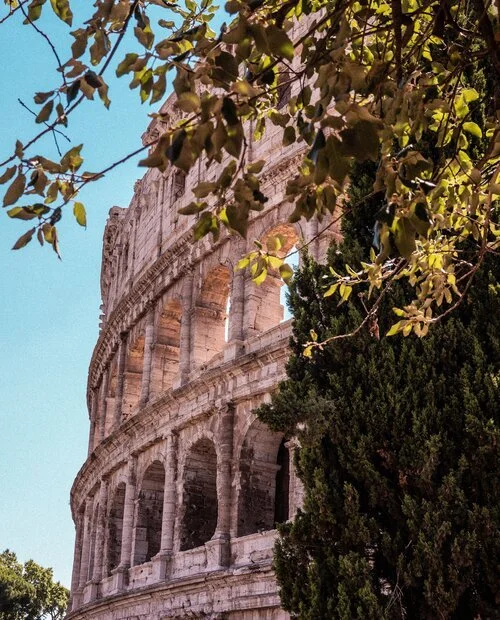

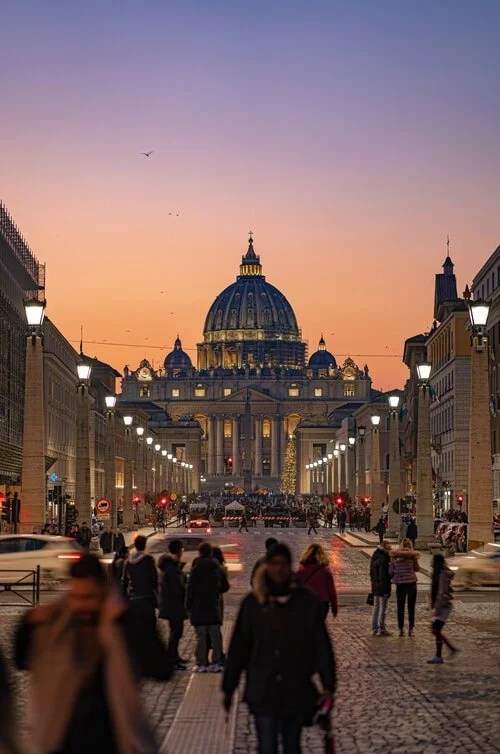
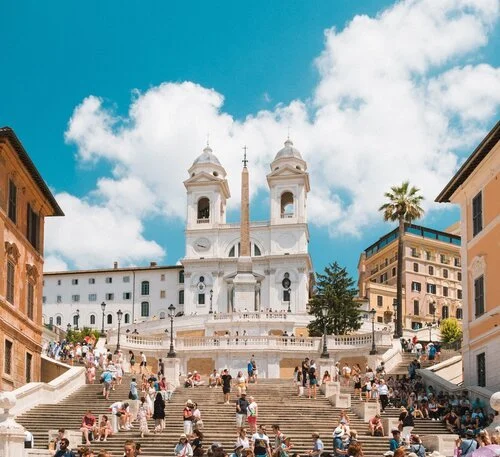
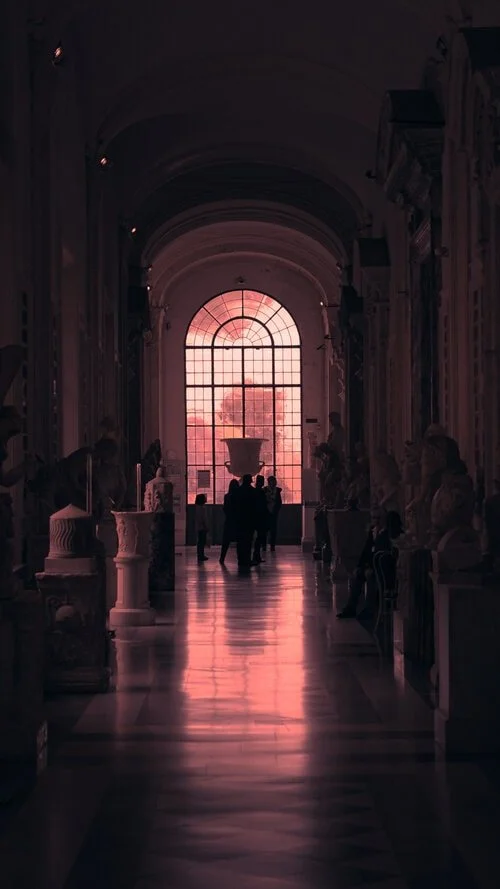
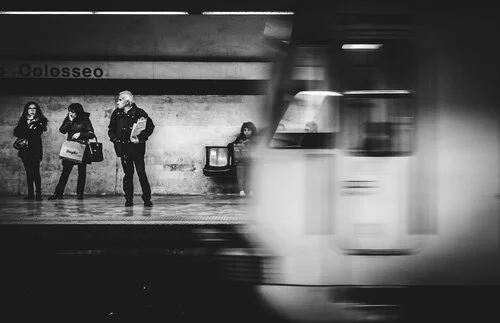
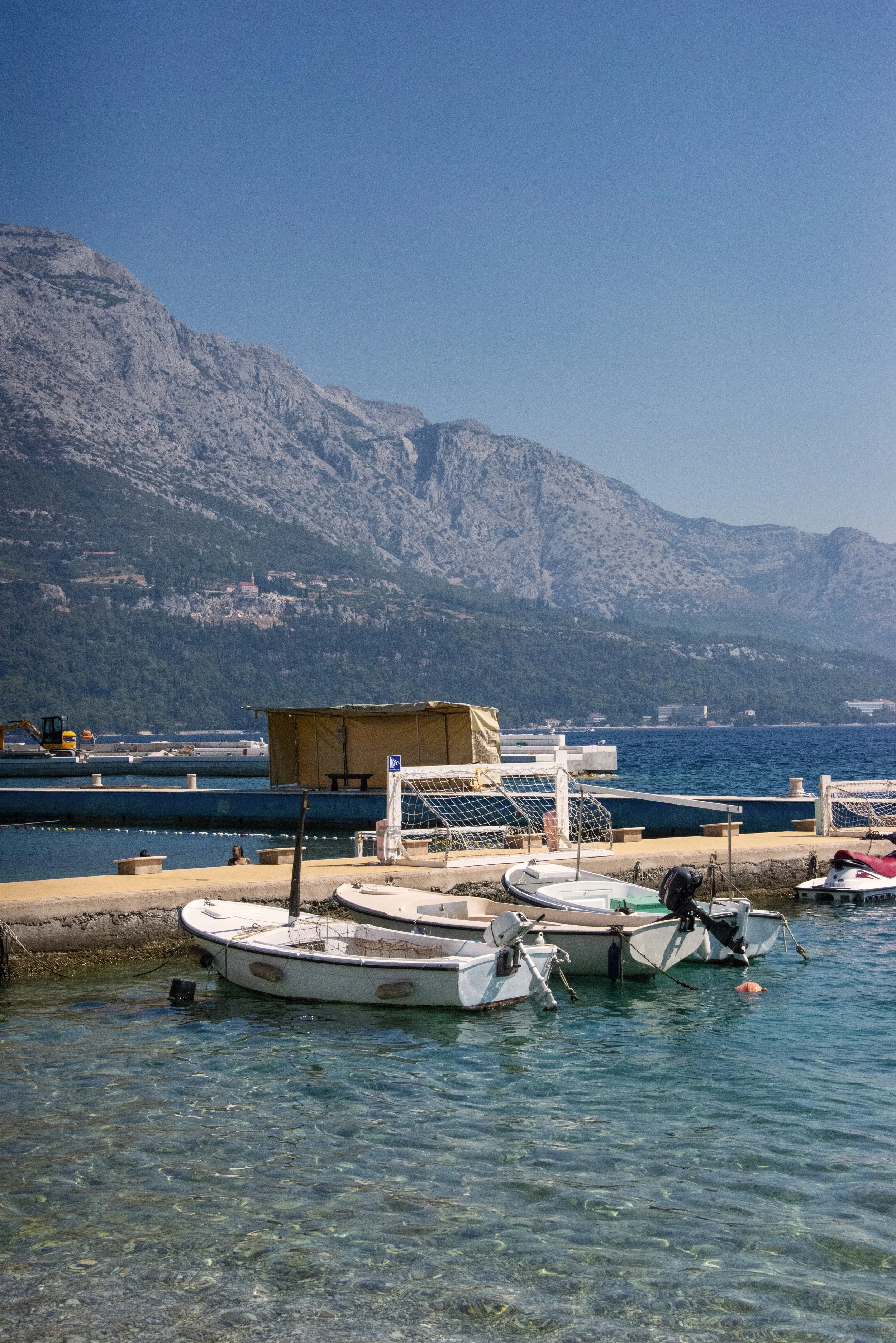
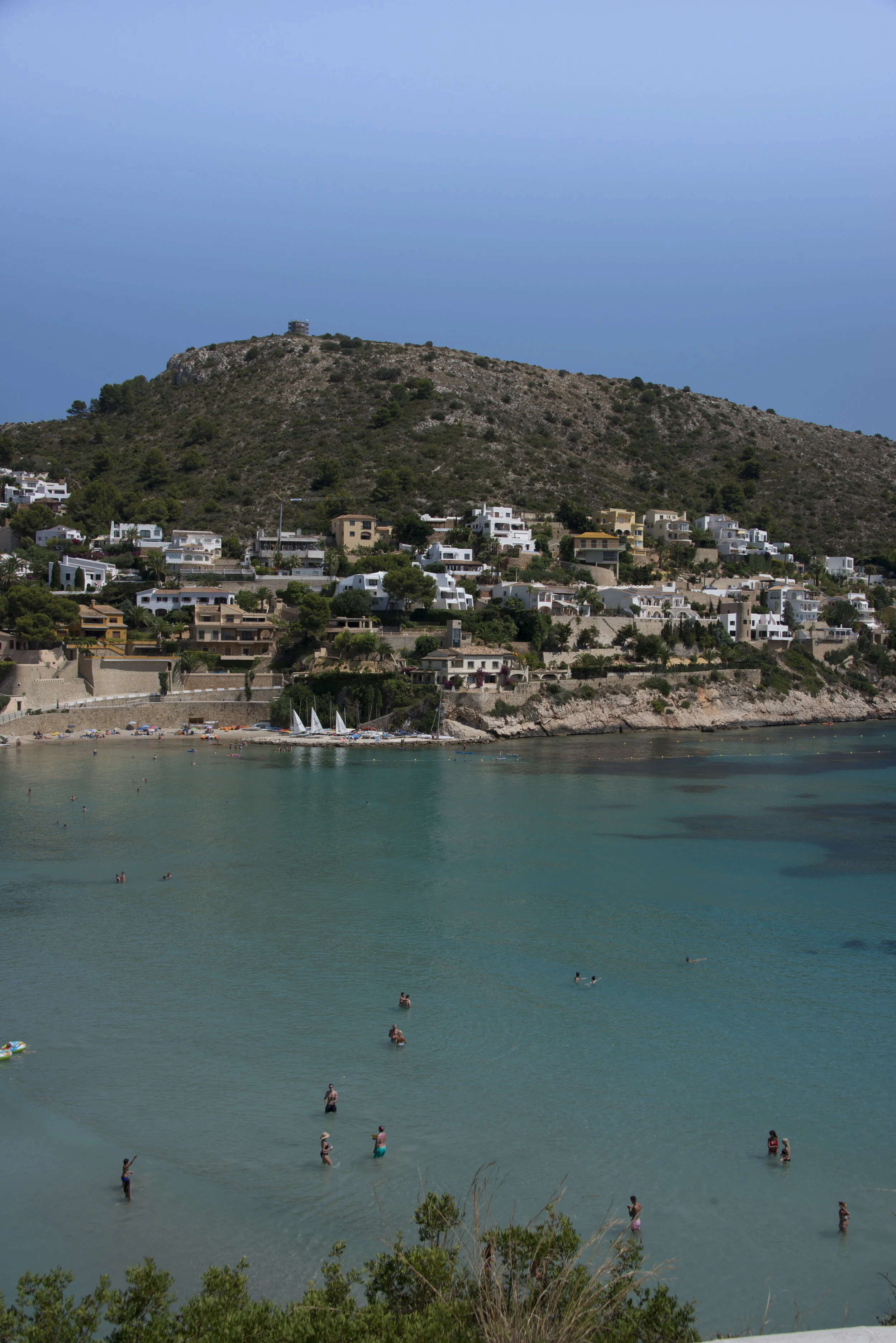







Situated at the foothills of the Sierra Nevada mountain range, this city boasts something for adventure, architecture and nature lovers alike. From the ancient Alhambra Complex to the saline white streets of Albacín, this Spanish city is steeped deep in charm. If you’re wondering how to plan a trip to Granada, look no further!